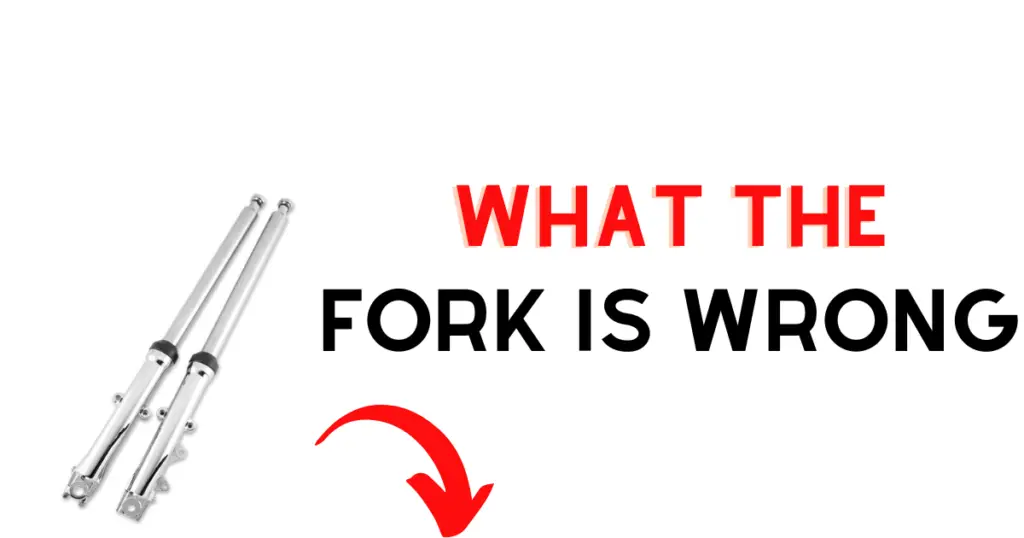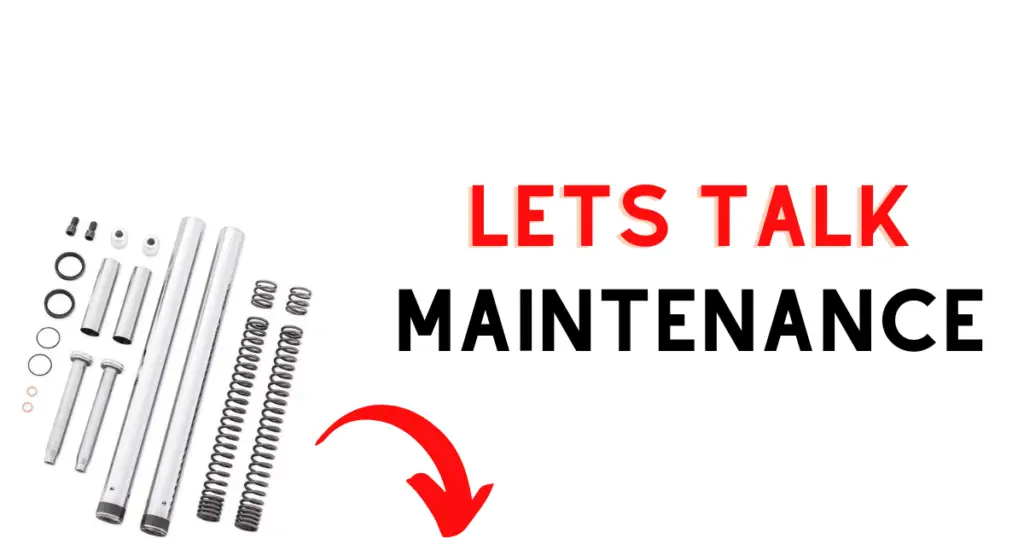Harley Davidson is a well-known motorcycle brand that is famous for its unique design, powerful engine, and smooth ride. However, like any other machine, Harley Davidson motorcycles are not immune to problems, especially when it comes to the front forks. Front fork problems can cause a range of issues, from uneven suspension movement to oil leaks, which can affect the bike’s stability and make it more difficult to control.
One of the most common problems with Harley Davidson front forks is leaking fork seals. These seals are responsible for keeping the fork oil contained within the front forks, ensuring smooth suspension performance. When the seals start to leak, it can lead to oil dripping onto the front wheel, affecting the bike’s handling and safety. Bent or misaligned tubes are also a common problem with Harley Davidson front forks. This can occur as a result of accidents or riding conditions that put excessive stress on the forks. Bent or misaligned tubes can cause uneven suspension movement, which can affect the bike’s stability and make it more difficult to control.
Regular maintenance and repair of Harley Davidson front forks can help prevent these problems from occurring. It is important to check the fork seals regularly and replace them if necessary. Additionally, if the front forks are bent or misaligned, it is crucial to have them repaired or replaced by a professional mechanic. By taking these steps, Harley Davidson owners can ensure that their motorcycles are safe and reliable for years to come. But what else do you need to know?
Common Harley Davidson Front Forks Problems

Harley Davidson front forks are designed to provide a smooth ride and stable handling. However, like any other mechanical component, they can experience issues over time. Here are some of the most common front fork problems that Harley Davidson owners face.
Leaking Fork Seals
Leaking fork seals are a common problem that can occur with Harley Davidson front forks. These seals are responsible for keeping the fork oil contained within the front forks, ensuring smooth suspension performance. When the seals start to leak, it can lead to oil dripping onto the front wheel, affecting the bike’s handling and safety. A visual inspection of the fork seals can help identify the issue. In most cases, replacing the seals can fix the problem.
Worn or Damaged Bushings
Another common problem with Harley Davidson front forks is worn or damaged bushings. These components are responsible for absorbing shocks and vibrations, and over time, they can become worn or damaged. This can lead to a rough ride, reduced handling, and even safety issues. Regular inspection of the bushings can help identify any issues. In most cases, replacing the worn or damaged bushings can fix the problem.
Bent Fork Tubes
Bent or misaligned tubes are also a common problem with Harley Davidson front forks. This can occur as a result of accidents or riding conditions that put excessive stress on the forks. Bent or misaligned tubes can cause uneven suspension movement, which can affect the bike’s stability and make it more difficult to control. A visual inspection of the fork tubes can help identify the issue. In most cases, replacing the bent or misaligned tubes can fix the problem.
Overall, regular inspection and maintenance of Harley Davidson front forks can help prevent these common problems from occurring. If any issues are identified, it is recommended that they are addressed promptly to ensure a safe and smooth ride.
Handling and Performance Problems
Harley Davidson front forks are designed to provide smooth suspension performance and enhance the rider’s experience. However, there are several issues that can arise, leading to handling and performance problems. In this section, we will discuss some of the most common problems that Harley Davidson owners face with their front forks.
Related: Harley Death Wobble Model Years, Causes, Signs and More
Excessive Front End Dive
One of the most common problems with Harley Davidson front forks is excessive front end dive. This can occur when the rider applies the front brakes, causing the front end of the motorcycle to dip down. Excessive front end dive can be dangerous, especially when riding at high speeds or in heavy traffic.
To address this issue, it is important to check the rebound and resistance of the front forks. If the forks are too stiff, they may not have enough rebound, causing the front end to dive. On the other hand, if the forks are too soft, they may not have enough resistance, causing the front end to dive as well.
Stiff or Unresponsive Steering
Another common problem with Harley Davidson front forks is stiff or unresponsive steering. This can make it difficult to turn the motorcycle, especially at low speeds. Stiff or unresponsive steering can be caused by several factors, including a damaged steering stem or worn out bearings.
To address this issue, it is important to inspect the steering stem and bearings regularly. If the steering stem is damaged or the bearings are worn out, they should be replaced immediately to ensure smooth and responsive steering.
Poor Ride Quality on Bumps
Harley Davidson front forks are designed to provide a smooth ride, even on bumpy roads. However, if the ride quality is poor on bumps, it can be a sign of a problem with the front forks. This can be caused by a lack of oil in the forks, worn out fork seals, or damaged fork tubes.
To address this issue, it is important to inspect the front forks regularly. If the oil level is low, it should be topped up immediately. If the fork seals are worn out, they should be replaced as soon as possible. If the fork tubes are damaged, they should be repaired or replaced to ensure a smooth ride.
In conclusion, handling and performance problems with Harley Davidson front forks can be dangerous and affect the rider’s experience. Regular inspection and maintenance of the front forks can help prevent these problems and ensure a safe and enjoyable ride.
Maintenance and Service Tips To Prevent Issues

Harley Davidson front forks require regular maintenance and service to ensure optimal performance and rider safety. Here is a guide on how to maintain and service your front forks:
Perform A Routine Fork Oil Change
Regularly changing the fork oil is essential to maintain the performance of your front forks. The recommended interval for changing the fork oil is every 20,000 miles or two years, whichever comes first.
To change the fork oil, follow these steps:
- Remove the fork tubes from the motorcycle.
- Drain the old oil from the fork tubes.
- Disassemble the fork tubes and remove the old seals and bushings.
- Clean all the components thoroughly.
- Replace the seals and bushings with new ones.
- Reassemble the fork tubes and fill them with the recommended amount of fork oil.
- Reinstall the fork tubes on the motorcycle.
Inspect and Replace Fork Components As Needed
Regular inspection of the front fork components is necessary to identify any worn-out or damaged parts that need replacement. The following fork components should be inspected:
- Fork tubes
- Springs
- Seals
- Bushings
- Damper rods
If any of these components show signs of wear or damage, they should be replaced immediately to avoid further damage to the front forks or compromise rider safety.
Check Fork Alignment and Adjustment Frequently
Proper fork alignment and adjustment are crucial to ensure optimal performance and rider safety. Misaligned or improperly adjusted front forks can affect the handling and stability of the motorcycle.
To align and adjust the front forks, follow these steps:
- Place the motorcycle on a level surface.
- Measure the distance between the center of the front axle and the center of the rear axle.
- Adjust the fork tubes until the distance is the same on both sides.
- Adjust the fork preload and rebound damping to the recommended settings.
Regular maintenance and service of your Harley Davidson front forks is essential to ensure optimal performance and rider safety. By following this guide, you can keep your front forks in top condition and enjoy a smooth and safe ride.
Troubleshooting and Diagnostics Procedure
Harley Davidson front forks can experience a range of problems, including play, movement, and unusual noises. Troubleshooting and diagnostics can help identify the root cause of these issues, allowing for effective repairs.
Assessing Front Fork Play and Movement
Front fork play and movement can be caused by a number of factors, including worn bushings, loose fasteners, and damaged fork tubes. To assess front fork play and movement, the rider should first inspect the front fork for any signs of damage or wear. They should then check the tightness of all fasteners and bolts, including the axle pinch bolts, handlebar clamps, and fork tube caps. If the problem persists, it may be necessary to replace the fork bushings or fork tubes.
Identifying Unusual Noises
Unusual noises coming from the front fork can be caused by a variety of factors, including worn fork seals, damaged fork tubes, and loose fasteners. To identify the cause of unusual noises, the rider should first inspect the front fork for any signs of damage or wear. They should then check the tightness of all fasteners and bolts, including the axle pinch bolts, handlebar clamps, and fork tube caps. If the problem persists, it may be necessary to replace the fork seals or fork tubes.
Professional Diagnostic Techniques
In some cases, professional diagnostic techniques may be necessary to identify the root cause of front fork problems. This may include the use of specialized diagnostic tools, such as a fork oil level gauge or a fork seal driver. Professional mechanics may also be able to identify issues that are not immediately apparent to the rider, such as worn or damaged fork bushings. If front fork problems persist despite troubleshooting and diagnostics, it is recommended that the rider seek the assistance of a professional mechanic.